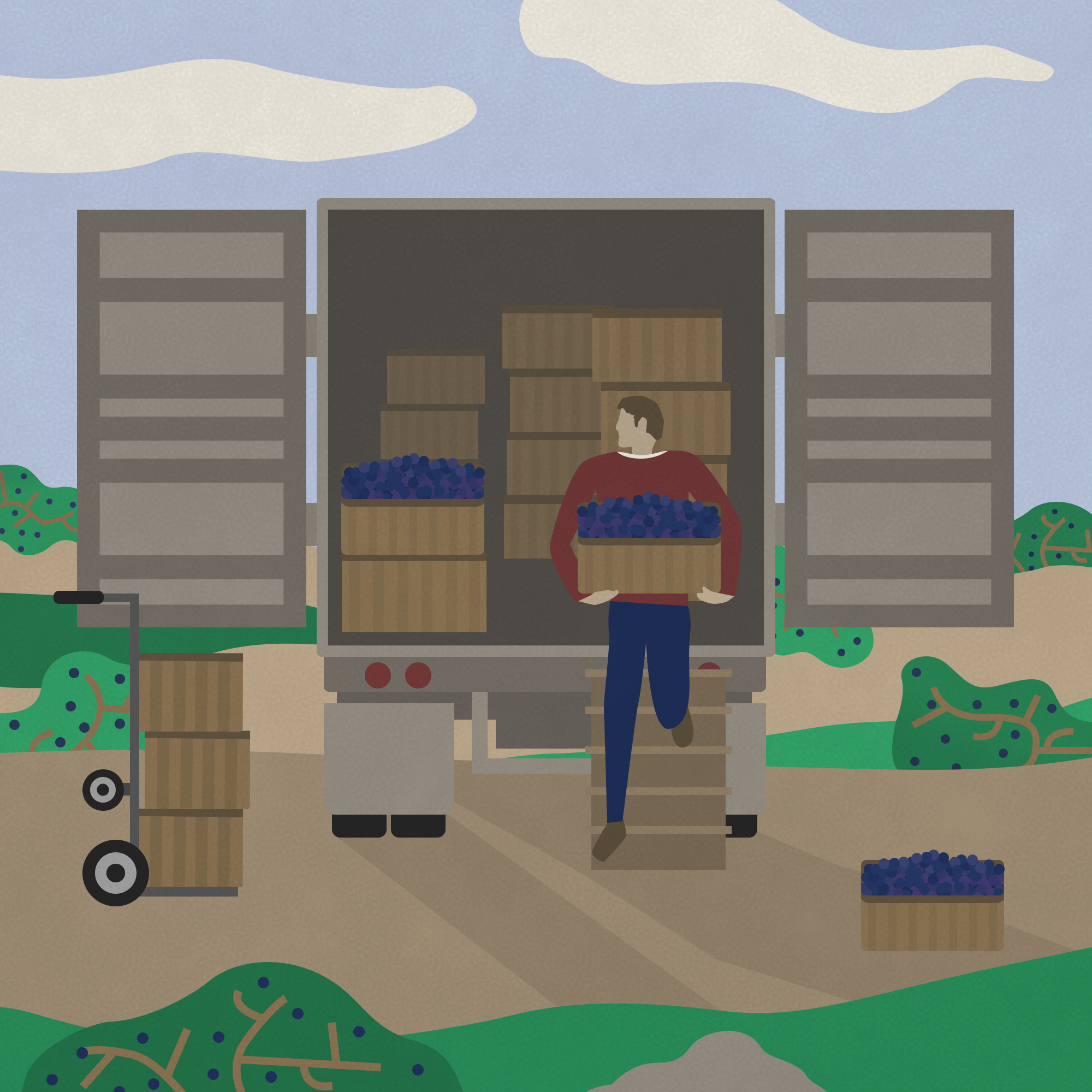Maine is the largest producer of blueberries in the world. Over 44,000 acres of land is covered by wild blueberries. The pruning process involved leaves only half of those acres available to be harvested every year. Enough blueberries are harvested during the short season to be frozen and sold through the entire off season.
Wild blueberries are wild by nature and can not be farmed like normal crops. They are one of four crops native to North America. There are thousands of different clones providing each handful of wild blueberries with unique flavor and color. The blueberries grow on a two year cycle, and even though they are wild, growers put in a lot of work year round to ensure the best possible crop.
Enhancing the Yield
The bees are not aware that they have been contracted to pollinate the blueberries.

In the springtime, the Maine blueberry barrens are in a constant humming of bees. Several million bees will arrive some time in the middle of may and work day in and day out, pollinating thousands of flowers a day. The bees are not aware that they have been contracted to pollinate blueberries but instead have their own task at hand. The bees are collecting nectar from the flowers to feed themselves as well as the thousands of eggs hatching in the hive. During this process they collect pollen from each flower and bring it to the next. The process benefits everyone: the bees, the berries, and the growers.
Pruning is a way of getting rid of overgrown stems, dead branches, and weeds to increase fruitfulness and growth. The traditional method of pruning the blueberry barrens is to burn the fields.
Irrigation is important when it comes to increasing the size and weight of the berries.
Harvesting the Crop

The entire wild blueberry barren crop is harvested in a single picking operation. Historically the blueberries have been harvested completely by hand. Metal rakes were developed to help separate the blueberries from the plants. When harvest time comes around friends and family all work together to ensure that the barren is harvested in time. The harvesting season usually begins in early August and lasts until Labor day.

Within hours of being picked the wild blueberries are sorted cleaned and processed
Fruits of the Labor
A small portion of the blueberries are kept fresh and sold locally immediately following the harvest. The majority of the crop is frozen and shipped all over the country. The frozen blueberries maintain their shape, size, color, and nutritional value when frozen. The freezing happens within 24 hours of the harvest when their flavor and antioxidant benefits are at peak. Frozen wild blueberries are often even more fresh than non-frozen ones.








